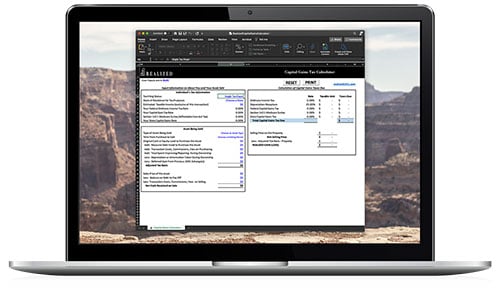Tax deferral is a tax-strategy that pushes out the due date on taxes for gains on an investment. For example, if you purchase a property for $300,000 and five years later sell it for $350,000, the gain will be $50,000. The IRS will want its share of that gain through taxes.
Gains on investments (also called capital gains) are not earned income. Therefore, they are taxed as unearned income, which means it does not incur payroll taxes. There are two rates that gains can be taxed at — short and long-term. Short-term gains occur on properties that are held for less than a year. Short-term gains are taxed as ordinary, unearned income. Long-term gains are taxed at a lower rate than short-term gains. To get an idea of the differences between short and long-term capital gains tax rates, long-term rates are 0%, 15%, or 20% for 2020. In contrast, short-term tax rates range from 10% to 37%.
When you take advantage of a tax deferral strategy, your long-term gain isn’t due when a property is relinquished/sold, or the gain is realized. Instead, depending on the specific tax-deferral strategy the investor is using, taxes are due later.
1031 Exchange
A 1031 exchange allows you to defer gains taxes on a property that you sell. As with all of the tax deferral strategies, there are certain rules to follow so that the strategy remains valid and avoids a taxable event.
To execute a 1031 exchange, you’ll need to identify a like-kind property within a specific time. Instead of selling a property and keeping the proceeds, a 1031 exchange allows you to roll out of one property and into another of equal or higher value.
Because a tax gain isn’t due at the time the relinquished property is sold, that leaves more funds available to invest in another property (i.e., replacement property). You can continue to execute a 1031 exchange and keep deferring your tax bill. Once you decide to finally sell a property without executing another 1031 exchange, your taxes on those deferred gains will come due. These will be long-term gains taxes assuming you have held the property for a year or more.
Other Real Estate Tax Deferral Strategies
A 1031 exchange is not the only real estate tax deferral strategy. There’s also opportunity zone funds (OZFs). OZFs not only defer taxes but can also reduce and ultimately eliminate them if you hold the investment for certain periods of time.
A section 721 (UPREIT) is another tax deferral strategy where the investor uses a 1031 exchange to move their proceeds into a REIT or move them directly into a REIT (without a 1031 exchange). Using section 721 means the investor cannot exchange back into real estate.
While not a tax deferral strategy, Section 121, which applies to the investor’s primary residence, allows for the exclusion of gain taxes up to a limit. If the investor has lived in the residence for at least two out of the last five years, he can exclude up to $250,000 in gains if single or $500,000 if married.
Real estate tax deferral strategies allow investors to put off paying their tax bill. If delayed long enough, the investor’s tax rate may change. If at the later period, the investor’s tax rate is lower than when the tax bill was due (execution of the tax deferral strategy), the investor will pay less on their tax bill. Planning out any tax deferral strategy is best done with your tax advisor.



